
What Every Drone Pilot Must Know Before They Fly in Canada
There are strict rules for operating vehicles on the road. The rules are even stricter for those operating in the skies. Transport Canada has well-defined rules for those planning on operating drones that every pilot needs to know [1].
To the authorities, consumer drones are classified as Unmanned Aircraft Systems (UAS). Their rising popularity has caused a headache for those responsible for regulating the skies above. Without the Canadian Aviation Regulations (Règlement) in place, the potential harm consumer drones could cause doesn’t bear thinking about. It’s in everyone’s best interest to abide by these rules.
This guide gives you tips on how to stay safe while flying a drone. Always follow Transport Canada rules while flying your drone and make sure that you obey local laws and regulations.
This guide will be updated on occasion with new content, images, and embedded videos. This document does not purport to provide you with legal advice. Always consult an attorney if you need legal advice.
Chapter 1
Safe Responsible Flying
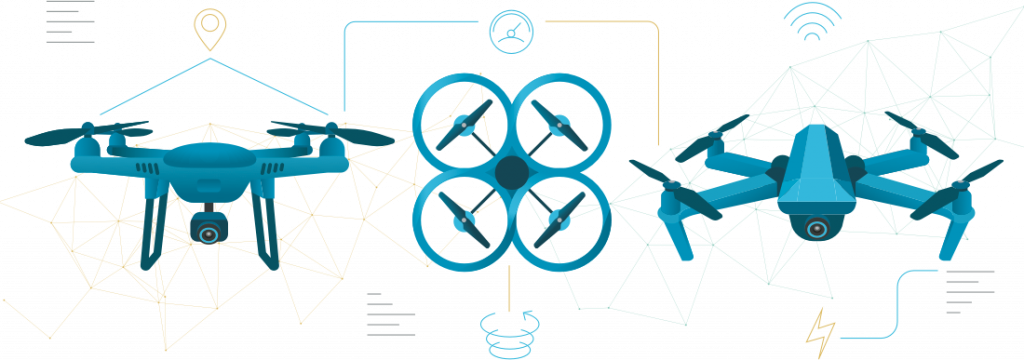
Exemptions from Usual Rules & Regulations
Toy and tiny lightweight drones don’t need official permission to fly if the craft weighs less than 250 grams. Anything over that weight and up to 35 kilograms has to comply.
Some recreational pilots of unmanned aerial vehicles (UAVs) only fly at designated fields or at special events run by the Model Aeronautics Association of Canada (MAAC). Note that in these cases the usual rules and regulations don’t apply. If in doubt, be sure to find out beforehand [2], [3].
Flying For Fun – New Rules & Regulations
Drone technology is forever changing and so the Canadian drone regulations have to adapt with the times. It’s the duty of every recreational drone pilot to keep up to date on the latest requirements [4].
The majority of drone users fly their crafts for fun. The legal requirements and operational use will vary. It all depends whether the pilot flies for recreational purpose, business, or for a public body.
The rules that apply depend on the type of craft and the purpose, but they all require permission [5]:
- Recreational drones (the vast majority)
- Business operators, i.e. farming, real estate, surveying land, etc.
- Public bodies like the police, fire brigade, etc.
Responsible flying is the obligation of the pilot. And there’s more to it than first meets the eye.
Responsible Flying Defined

Flying a drone in a safe manner might sound like good common sense. In many ways it is, but it’s not just a case of how you fly but also where, when, and when not to take to the skies [6].
Here’s a quick breakdown of the Canadian drone laws (based on operations) as they currently stand:
FLY YOUR DRONE:
- Lower than 90 meters from ground level
- Keep at least 30m from the public, vessels, and vehicles (UAV between 250g – 1kg)
- Keep at least 75m from the public, vessels, and vehicles (UAV between 1kg – 35kg)
- At least 5.5 km from any aerodromes (any areas where aircraft takeoff and land)
- At least 1.8 km from heliports or aerodromes used solely by helicopters
- Outside all restricted or controlled airspace
- At least 9km from disaster and natural hazard areas
- Keep away from areas that may otherwise interfere with first responders and police
- During daytime, in good visibility, without heavy cloud cover
- Within your sight at all times
- Within 500m or closer to you
- Only with a craft that’s clearly marked with your name, address, and phone number
Remember, rules and regulations can and do change so it’s your responsibility to keep abreast at all times. Failure to do so may result in accidents or legal consequences (see further down).
What to Know Before You Fly Your Drone
It seems like there’s a lot to know. Don’t worry; it’s not as complicated or as bureaucratic as things seem on paper. There are three things to acknowledge before you get your UAV wings:
- Make sure you have permission to fly your drone
- Know how to fly your drone in a safe and legal manner
- Understand the procedure for reporting a drone incident
Once you can check all the boxes above it’s time to have some fun [7], [8], [9].
Chapter 2
Public Drone Operations in Brief
The public drone rules & regulations for Canada are quite strict compared to other places right now. However, as more drones take to the skies other countries will most likely follow Canada’s example.
Canada public drone pilots fall into one of three categories:
- Very small drone operations
- Limited operations (rural)
- Complex operations (urban)
1. Drone pilots who fall into the “Small Drone Operations” category must:
- Be 14 years of age or older
- Clearly mark the UAV with their name and essential contact information
- Pass a basic knowledge test
- Carry liability insurance
- Fly at least 30m from people, 5.5km from airports, and 1.85 km from heliports
2. Drone pilots who fall into the “Limited Operations (Rural)” category must:
- Be 16 years of age or older
- Clearly mark the UAV with their name and essential contact information
- Pass a basic knowledge test
- Carry liability insurance
- Fly at least 75m from people, vehicles, and vessels
- Fly 150m from open-air people events
- Fly 1km away from built-up areas, 5.5km from airports, and 1.85 km from heliports
Drone users in this category typically fly in rural areas for things like agriculture, wildlife, etc.
3. Drone pilots who fall into the “Complex Operations (Urban)” category must:
- Be 16 years of age or older
- Hold a special pilot permit limited to small drones
- Register and mark the craft with unique identification (provided by Transport Canada)
- Carry liability insurance
- Fly drones that meet specific design standards
- Adhere to a specific set of flight rules at all times
- Get official air traffic control approval before flying in controlled airspace
- Fly at least 30m from people, vehicles and vessels
- Fly 150m from open-air people events unless 90m high or above
This category is primarily for pilots who intend to fly in urban skies within strictly controlled airspace. It’s also for flying within close proximity to places where any form of aircraft takes off and lands.
You can find full details of all these rules on the Transport Canada website [10], [11], [12].
Points to Note
Age requirements: At the moment the minimum age requirement for flying small drones between 250g to 1kg max is 14 years. To operate crafts between 1kg and 25kg the pilot must be at least 16 years.
Special Flight Operations Certificate (SFOC): It’s no longer necessary to apply for an SFOC for drones weighing between 250g-25kg operated within your visual line of sight.
Transport Canada updates public drone rules and regulations periodically. Make sure you stay informed or risk safety and/or legal consequences.
How to Mark Your Drone
The data used to identify your drone depends which category you fly under. For categories 1-2 above, all you need to do is include basic owner information, i.e. name, address, and a current phone number.
In the complex operations category you must register your drone first before you can fly. Transport Canada will provide you with the unique registration marks for your craft.
You can mark your UAV by engraving, using a permanent label, or by writing with a permanent marker unless told otherwise. The most important thing is that it’s permanent and clearly visible.
Breaking the Rules
You can expect trouble if you fly a drone in any category and fail to notify the powers-that-be. Please stay informed with developments. Authorities can and do put forward new proposals at any time.
Any public drone pilot caught for reckless or negligent flying in Canada could face serious consequences. Current fines depend on the severity of the offence and who the guilty party is.
For individual drone pilots the fines can range from $1,000 to $5,000. For corporations fines may start at $5,000 and go up to $25,000 depending on the severity of the violation [13].
Drone Rules for Visitors to Canada
There are plenty of people asking online but with conflicting answers. I decided to contact the Civil Aviation Communications Centre (CACC) direct. This update is from Thursday September, 21, 2017.
Canadian law classifies visitors who want to fly drones as “foreign UAV operators”. You have to apply for a Special Flight Operations Certificate (SFOC) before you can operate your drone in Canada.
CACC suggest visitors contact the regional office that best corresponds with the region of Canada you plan to fly in. They will be able to give you details on how to submit an SFOC application [14], [15].
CACC also suggests tourists who want to fly drones in Canada visit their Drone Safety website [16].
Chapter 3
The Sky’s Not the Limit
The new altitude restrictions for recreational drones have got UAV pilots hopping mad. They think the maximum 90m (295 ft.) height above ground level has practically grounded them.
It’s quite a difference compared to the US regulations of 122m (400 ft.). It’s hard to monitor too. Some drone software interfaces give you an estimated altitude but they don’t all provide such data.
In the US it’s easier to guestimate. The suggestion is that when you start to lose sight of your drone then it’s probably going out of range. It’s not so easy with the lower Canadian height restrictions [17].
Has Regulation Killed Off Delivery Drones
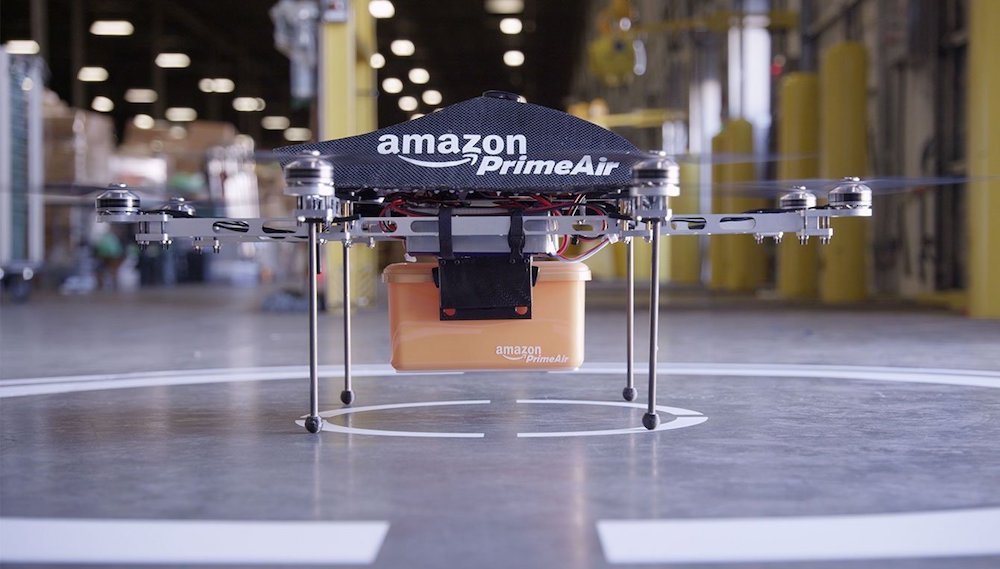
In 2015, Amazon was busy testing its Amazon Prime Air autonomous drones out in Canadian airspace. Back then the US limitations were too restrictive for the Seattle-based company to experiment.
The idea is to deliver packages less than 2.5kg (5 lbs.) in 30 minutes or sooner. But things have changed a lot since then. So can Amazon still operate its exciting drone delivery service in Canada?
Despite all the restrictions, Canada could see its first drone delivery service toward the end of this year, 2017. But it’s not Amazon, and it may not be for retail purposes—at least not yet.
There’s a particular focus on drones serving the northern communities. This is a region where small to moderate sized towns are far away and the roads are very few. The potential benefits are many [18].
Chapter 4
Flying for Business
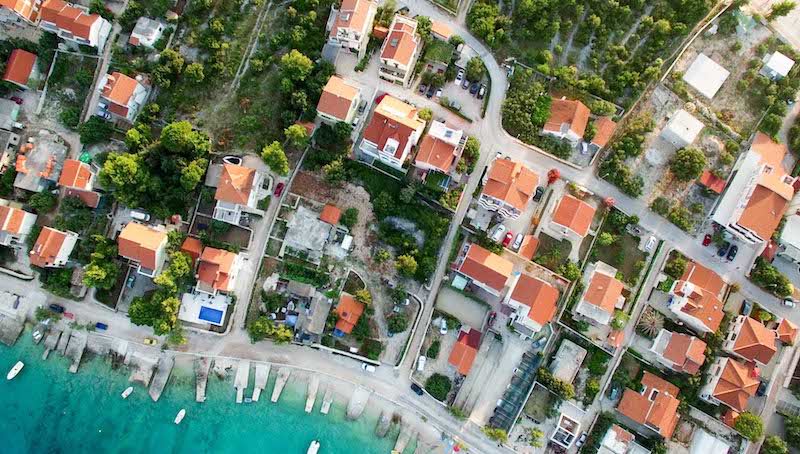
Consumer drones are a lot of fun but they can also provide valuable services (potentially saving lives in some cases). UAVs are useful in agriculture, research & development, and for wildlife conservation.
Anyone with a passion for flying drones and a talent for taking impressive aerial photos and video can turn their hobby into a business. From real estate to weddings, your imagination is the limit.
Canada is not the easiest place to fly drones because of all the restrictions. But as long as you can work around them the business potential is there. It doesn’t take much to get started either.
If you’re prepared to follow these seven steps you’re already off to a great start:
- Get yourself off to ground school
- Become a member of Unmanned Systems Canada
- Go to flight school
- Choose your first drone with care
- Take out comprehensive insurance
- Apply for a Special Flight Operating Certificate (SFOC) if required
- Practice: get good and put the word out
The above list is just a guide. For more information on the whys and wherefores visit resource link #17 at the end of this guide [19], [20].
Chapter 5
A Safe Space to Fly
The current drone rules outlined in this guide should help. They dictate where you can and cannot fly your drone at a general level. That is height and distance away from people, events, and structures.
There have been numerous incidents in the past. The likelihood for future incidents is a concern with so many new UAVs out there. The sky may look safe and empty but that doesn’t always mean it is.
Some public drones can fly fast, very fast. In the event of a flyaway that little robot can become an out of control missile. It’s understandable why there are growing concerns about UAV safety.
Responsible flying doesn’t only mean the way a pilot handles their craft. It also means flying in a designated safe space. In the US, the FAA has developed a useful mobile app called B4UFLY.
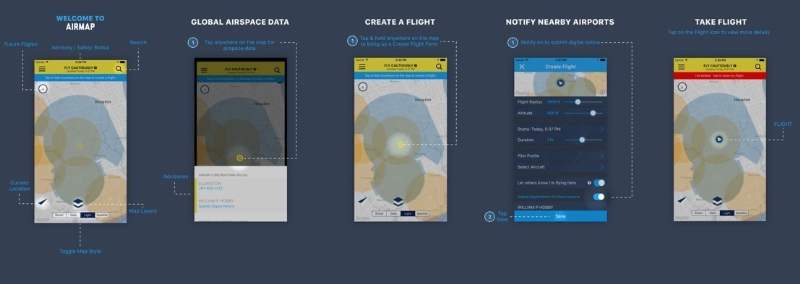
Here in Canada, there’s no official app from the government bodies at the time of writing. There is, however, a US-based website called Airmap that may prove useful
Although it’s not a Canadian site, Airmap does show Canadian cities. Some drone pilots find it useful to map their flights in advance. It can give some idea of where you can and can’t fly your drone.
Transport Canada does have details of their no-drone zones. It should be up-to-date and gives a clear indication of forbidden/permissible areas to fly. It’s called the UAV Site Selection Tool, [21], [22].
You Want to Fly Close to an Airport
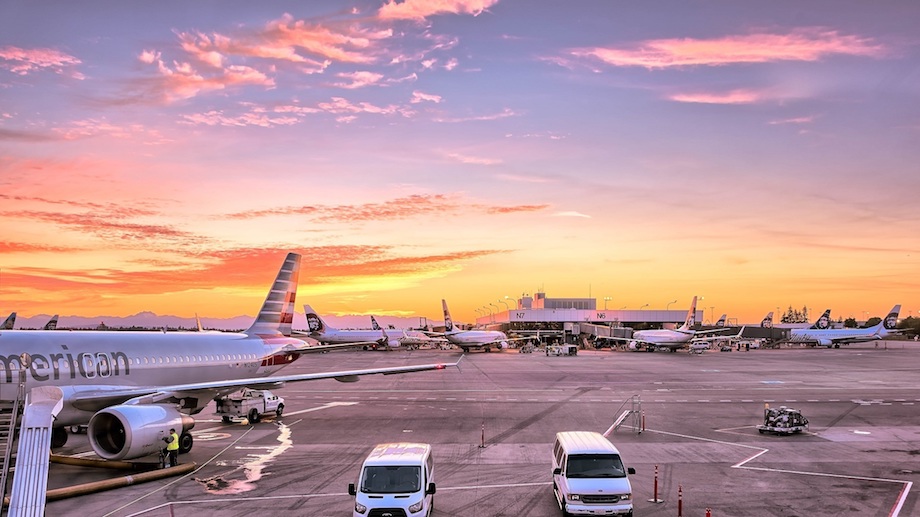
Canada forbids flying public UAVs within the restricted distance zones of airports and heliports. The only exception is with those flying drones under the Complex Operations (Urban) category.
Even in this category, it’s not possible to fly within the restricted zones without prior permission. That means official air traffic control approval. Failure to comply can result in serious consequences.
The thing to be wary of here is that you may be close to a small, sleepy airport, but not even know it. In Canada, there are five classes of airports which include:
- International
- National
- Regional
- Local commercial
- Local (non-commercial)
It’s vital to choose your skies with caution and knowledge. An aerodrome comes in many forms, e.g. land, water (including frozen), and other surfaces where aircraft can legally take off and land [23].
There were more than 1,400 aerodromes around Canada at the last count in 2010.
Chapter 6
Canadian Drone Accidents and Incidents
Each year more members of the public become first-time consumer drone pilots. The inevitable consequence is that the incidents and potential for accidents increase with traffic.
The University of Calgary has done a study on these very issues. It’s official; there are now more unmanned aerial vehicles in Canadian skies than piloted aircraft.
This sharp upsurge—coupled with inexperienced drone pilots—has led to an increasing number of incidents and concerns. Let’s look at some of the drone data taken from Nov 2005 to Dec 2016.
The findings come from drone incident data collected from the CADORS (Transport Canada Civil Aviation Daily Occurrence Reporting System) database.
- 355 civilian drone incidents reported in Canadian airspace
- 5% of the above were drone sightings in restricted areas
- 3% involved close encounters between UAVs and piloted aircraft
- There was a dramatic rise in incidents after 2013
- 2013 was the year drone technology started to become easily available to consumers
All things considered, it’s no real surprise that technology-based solutions, rules, and newer, stricter regulations evolve. Public safety must always come first [24].
The Conclusion
The public fascination with drones is only set to increase as products become better, cheaper, and more versatile. Flying public drones is not some fad that’s going to go away anytime soon.
Unmanned aerial vehicles (UAVs) can be a lot of fun. Racing drones is on the increase too. The most popular use remains with camera drones, used for taking aerial video and photos of travel and events.
It’s important to understand that rules and regulations set out by Transport Canada are there for a reason. Abide by these rules and you can fly safe, have fun, or even start your own drone business.
Resources
- https://www.tc.gc.ca/
- http://www.maac.ca/en/
- https://www.tc.gc.ca/eng/civilaviation/opssvs/getting-permission-fly-drone.html#notification
- https://www.tc.gc.ca/media/documents/ca-opssvs/Flying_for_fun_EN-V8.pdf
- https://www.tc.gc.ca/eng/civilaviation/opssvs/getting-permission-fly-drone.html
- http://www.tc.gc.ca/eng/mediaroom/interim-order-respecting-use-model-aircraft.html
- https://www.tc.gc.ca/eng/civilaviation/opssvs/getting-permission-fly-drone.html
- https://www.tc.gc.ca/eng/civilaviation/opssvs/flying-drone-safely-legally.html
- https://www.tc.gc.ca/eng/civilaviation/opssvs/report-drone-incident.html
- https://www.tc.gc.ca/eng/civilaviation/opssvs/proposed-rules-drones-canada.html#marking
- https://www.tc.gc.ca/eng/civilaviation/opssvs/proposed-rules-drones-canada.html#knowledge
- https://www.tc.gc.ca/eng/civilaviation/opssvs/proposed-rules-drones-canada.html#liability
- https://mobilesyrup.com/2017/07/24/new-proposed-drone-regulations-transport-canada/
- http://www.tc.gc.ca/eng/civilaviation/opssvs/regions-139.htm
- https://www.tc.gc.ca/media/documents/ca-opssvs/Infographic_-_Do_I_need_permission_to_fly_my_drone.pdf
- http://www.tc.gc.ca/eng/civilaviation/drone-safety.html
- https://mobilesyrup.com/2017/03/25/drone-restrictions-canada-recreational-grounded/
- https://www.engadget.com/2017/01/15/canada-delivery-drone-test-approval/
- https://aerobotika.com/2016/01/the-steps-to-start-a-drone-company-in-canada/
- https://www.unmannedsystems.ca/
- https://app.airmap.io/#
- https://www.nrc-cnrc.gc.ca/eng/solutions/collaborative/civuas/uav_site_selection_tool.html
- http://www.thecanadianencyclopedia.ca/en/article/airport/
- http://www.nrcresearchpress.com/doi/abs/10.1139/juvs-2016-0033#.WcNNIrIjGHs
